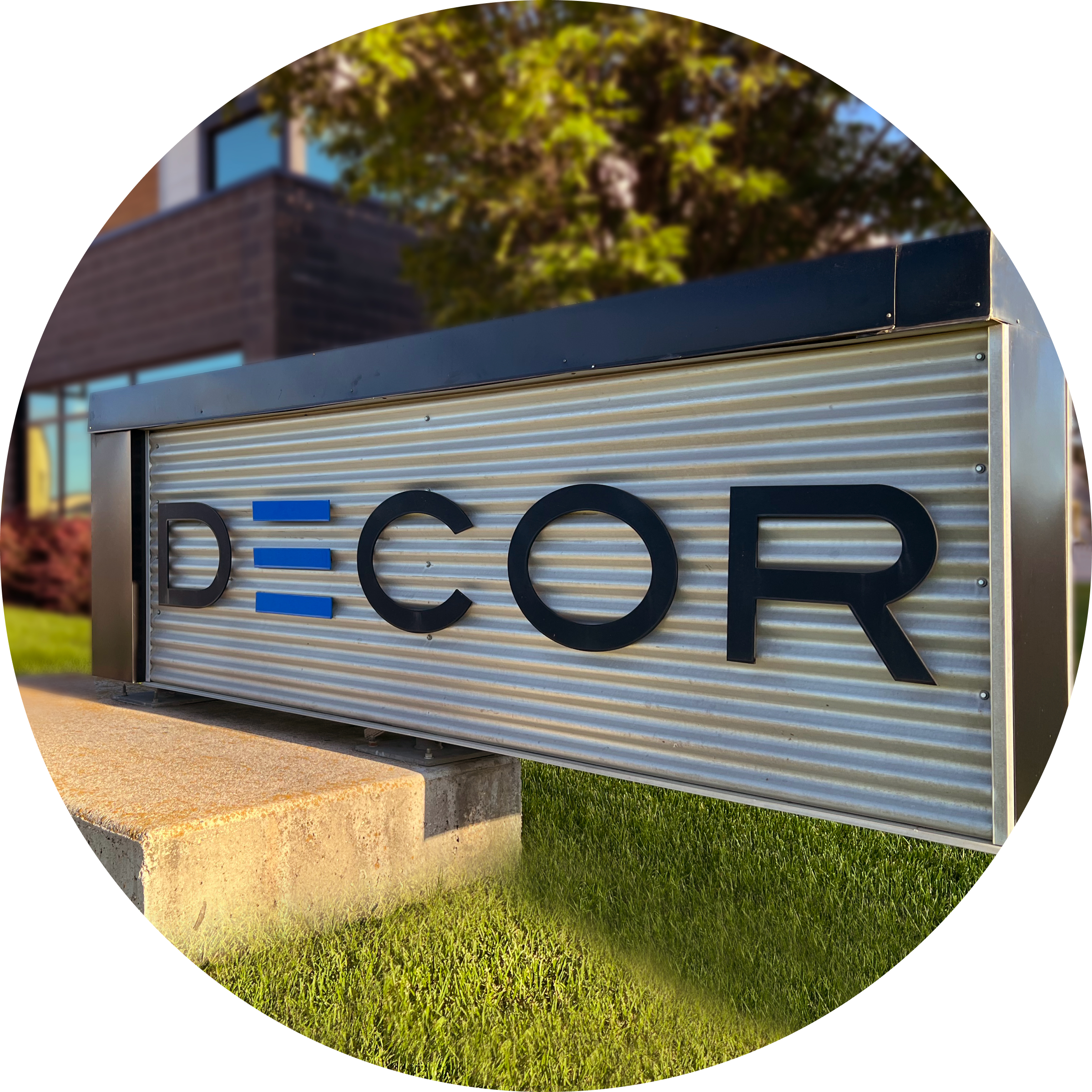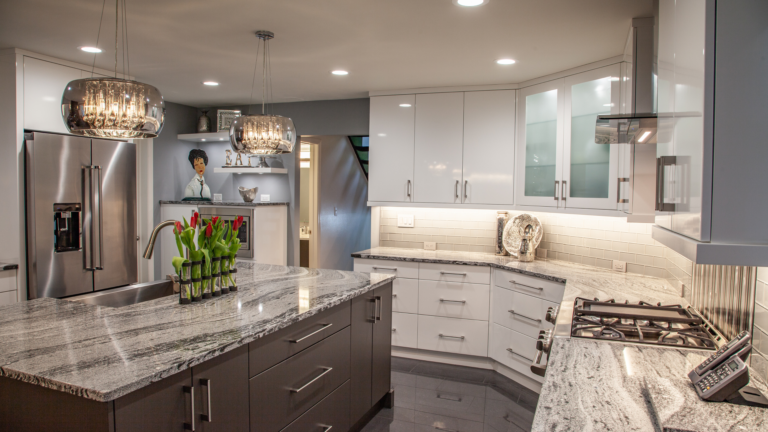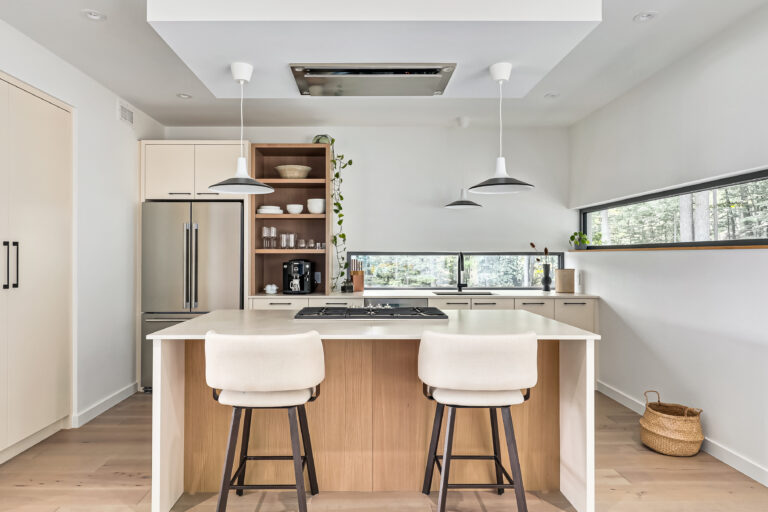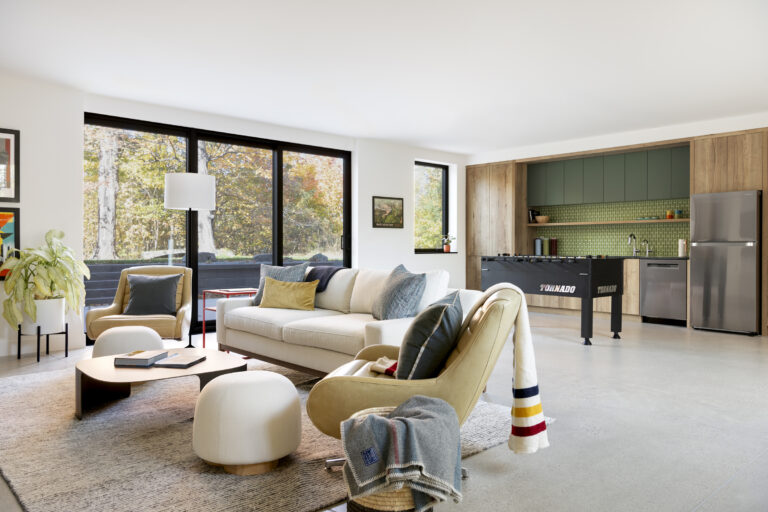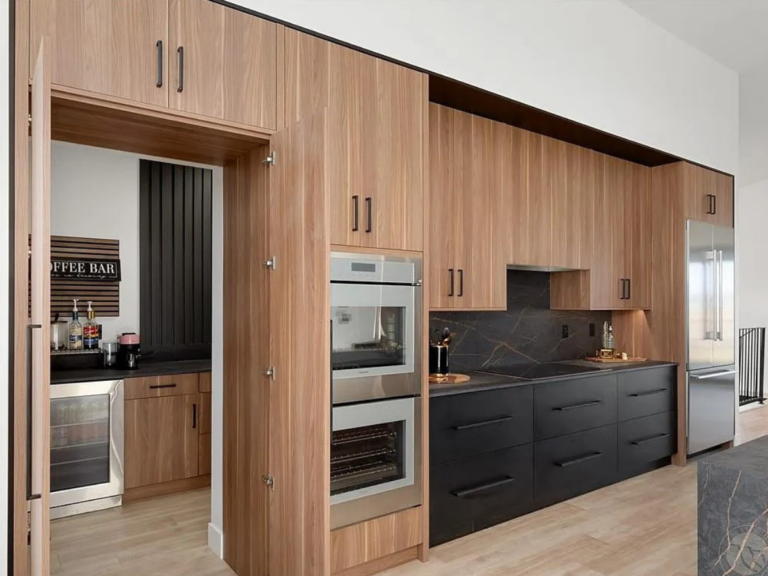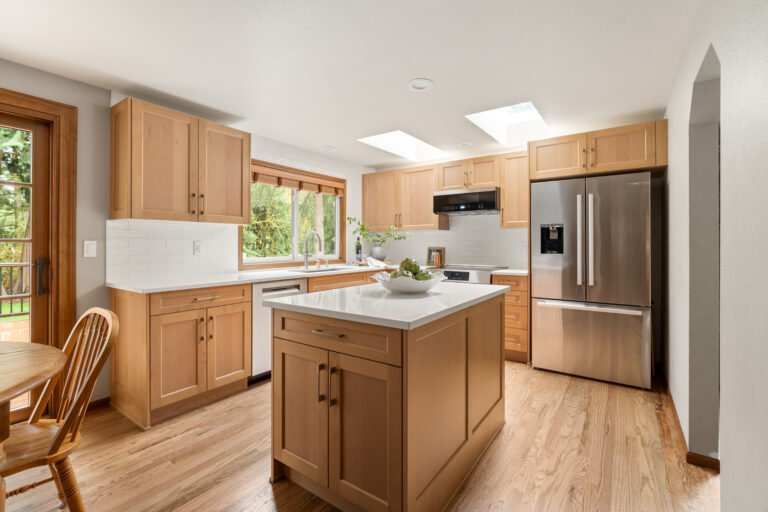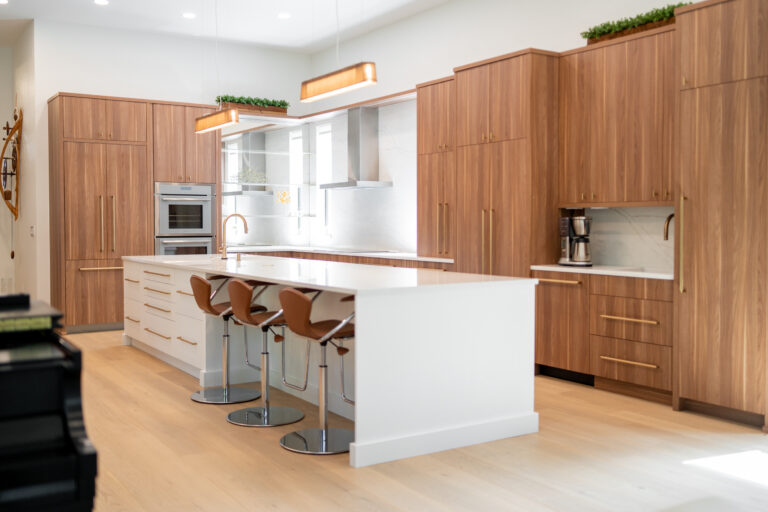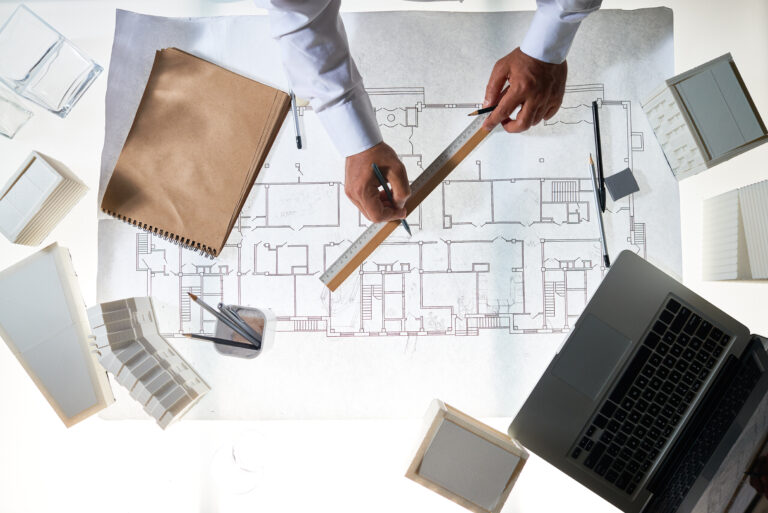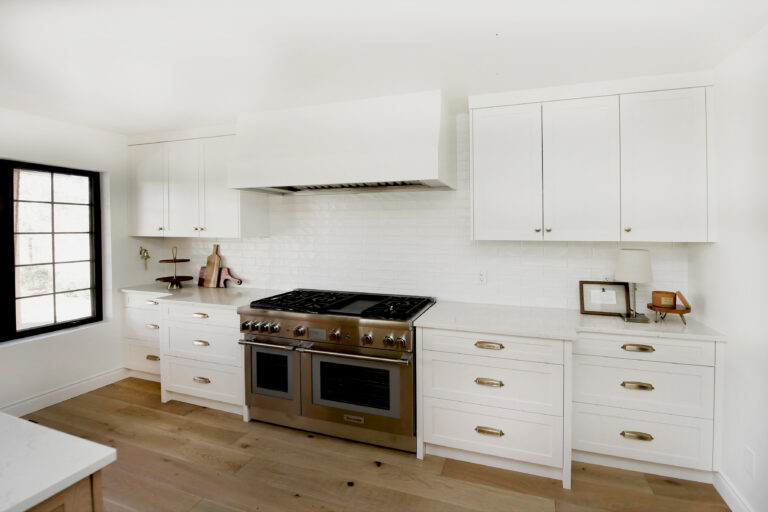Nothing matches the warmth and beauty of live edge countertops.
Live edge wood countertops (a.k.a. raw edge or raw wood countertops) give the kitchen a distinctly warm and welcoming feeling. They fit perfectly in log cabins or any rustic or farmhouse kitchen!
The rich colour tones, knots, and complex wood grain patterns give it a special kind of warmth that will make you feel like your home is directly part of the forest and its natural beauty.
So, let’s get into what live edge counters are, where these wood slabs come from, and their pros and cons.
The Quick Pros and Cons
PROS
1. Eco Friendly
2. Natural Beauty
3. Long Lasting
CONS
1. High Maintenance
2. Humidity Sensitive
3. Easily Dents and Scratches
What Are Live Edge Wood Countertops?
The live edge wood slabs are harvested from dead-standing trees and root systems on the forest floor, taking only what nature is already done with.
The most common trees used are maple, black walnut, redwood, elm, walnut, western juniper, and other incidental trees.
A waterproof hand-rubbed finish is used on the live edge wood slab, which then becomes part of the wood, expanding and contracting with it as moisture levels rise and fall. This makes it easy to clean and repair if needed.
That said, let’s get into the pros of having raw wood countertops.
The Pros of Live Edge Countertops Eco-Friendly
1. Eco-Friendly
The wood that’s taken for live edge wood countertops often comes from reclaimed material. Harvested from dead-standing trees and root systems. This way, only what nature is already done with is being taken.
And when the kitchen is ready for its next remodel that countertop doesn’t need to end up in a landfill.
Instead, it can be reused for other purposes, and if that’s not possible, it can be processed for other purposes like compost for soil enhancement, sawdust for animal bedding, mulch for weed control, wood flour for cleaning up spills, fuel pellets for wood stoves, or wood chips for landscaping or trail stabilization.
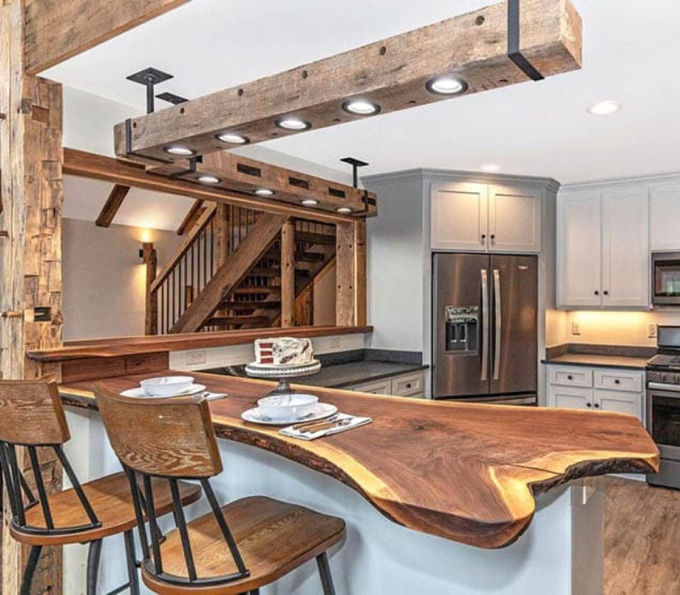
2. Wood is Warm
Wood is a natural insulator because of the air pockets that it has within its cellular structure. It’s 15 times better than masonry and 400 times better than steel.
That means a wooden countertop will be warm to the touch.
Wood isn’t just physically warm, but also brings up those warm cozy feelings. Live edge countertops are most likely the closest you’ll feel to nature in comparison to any other countertops out there.
3. Long Lifespan
Wooden countertops have a long lifespan because they can be sanded and refinished over and over again, sanding out any scratches, or dents, or smoothing out any chips on the edges.
Now, despite these amazing advantages, there are some downsides to having wood countertops, let’s go over them.
The Cons of Live Edge Countertops
1. They Need High maintenance
live edge wood countertops require huge amounts of maintenance.
It depends on the type of wood species and the sealant used. Usually, it’s tung oil or mineral oil, so you’ll likely need to reapply the oil around two to three times a year.
2. Live Edge Countertops Are Humidity Sensitive
Wood is humidity sensitive! It expands and contracts as the moisture content level rises and falls within the space.
The extreme effects of moisture levels can be quite ugly on wood. For example, if the live edge wood slab were to dry out, you’ll find it warping and even cracking.
In contrast, if the wood has too much moisture content, it’ll start moulding or you might start to see mushrooms grow.
To know more about how moisture affects wood, feel free to read up on our article about understanding moisture in wood.
3. Easily Dents and Scratches
Wood is one of the softest materials out there that’s used for countertops. None of the other materials dent or scratch as easily as wood.
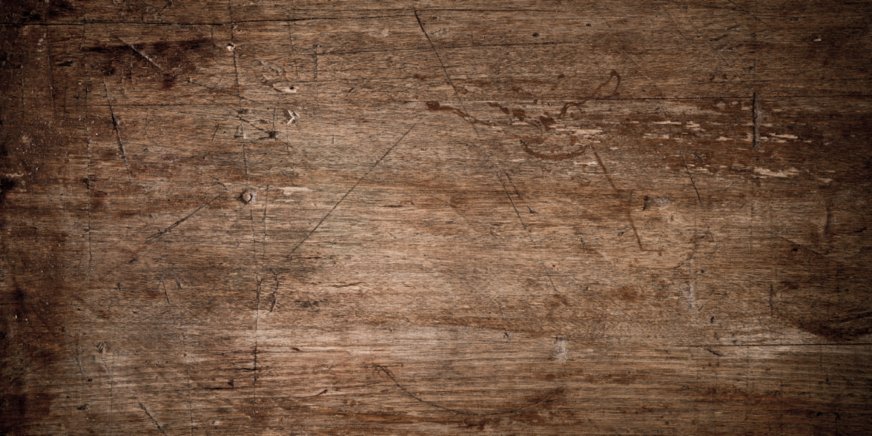
4. Not Compatible With All Household Cleaners
Wood is sensitive to household cleaning chemicals, don’t use them on wooden countertops or cabinets. Cleaning them properly will require a damp cloth and some mild dish soap mixed with some water in a sprayer.
To sanitize live edge wood countertops, all that’s needed is 1 part white vinegar mixed with 4 parts of water. Spray it on the countertop, wait 10 minutes, then wipe it away.
IMPORTANT: Avoid using any abrasives when wiping to prevent scratches from showing and then having to refinish the surface earlier than you would with just normal wear and tear.
Wood Slab Maintenance and Care
When it comes to upkeep on live edge wood countertops, there are four short rules to follow to avoid most problems.
- Make sure to wipe any spills immediately to prevent moisture from damaging them.
- Wood is not heat resistant, so avoid putting any hot pots or pans on the surface. Use hot pads at all times to prevent the countertop from getting scorch marks.
- Avoid bacteria from nesting in your wood countertops by using cutting boards instead of the countertop itself as a chopping block.
- Make sure not to forget about reapplying the finish to your live edge slabs approximately every 3-6 months. This will help prevent stains from appearing and you won’t have to sand anything down for a longer time.
Now that we’ve covered how to take care of a live edge wood countertop, let’s look at the design aspect of them.
Live Edge Countertop Design
In terms of design, wood is one of the most versatile materials for kitchen cabinets and countertops. It’s one of those materials that will fit with nearly anything and into nearly any style of kitchen or bathroom.
However, there are designs where they fit in better than others. In terms of live edge wood countertops, they’re more often seen in rustic or farmhouse-style kitchens.

Wood is Soft
Fragile items like a glass of water or a wine bottle shatter easily when they drop on countertops made of stone or concrete, but not wood. Wooden Countertops are soft, and fragile items are much safer with them.
On the other hand, because they’re soft, denting, scratching and knife marks are far easier to make than with other materials. So with that in mind, let’s talk a little more about the lifespan of a live edge wood countertop.
The Lifespan of Live Edge Countertops
When your wooden countertop has more dents, scratches, and knife marks than your eyes can bear, that’s when it’s time to sand it and reapply the finish.
Now, as we mentioned before, the reason wooden countertops have a long lifespan is because of the ability to sand and refinish the surface many times over again.
To prolong the life of live edge wood slabs even more, make sure not to use the counter as a chopping block, instead use a cutting board to prevent leaving knife marks on the counter.
Final Thoughts
Nothing will complete a rustic or country kitchen better than a live edge countertop. Imagine a beautifully cut wood slab, that possibly has a bit of bark on the display side of it and is polished shiny and covered with a clear finish.
See, the best part about live edge counters is that they only get better with the years. A little distress in the shape from everyday use only adds to its natural beauty.

